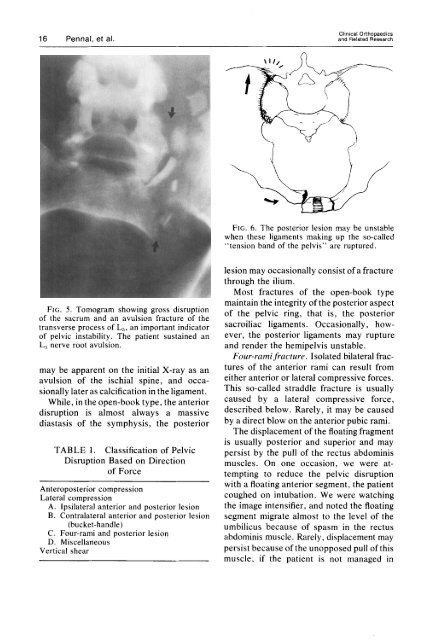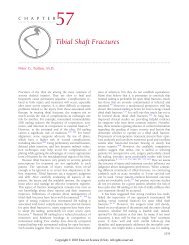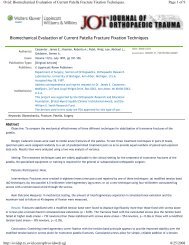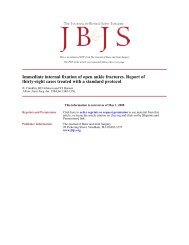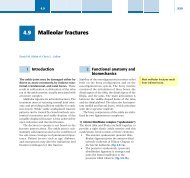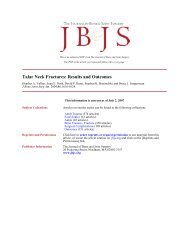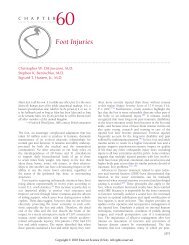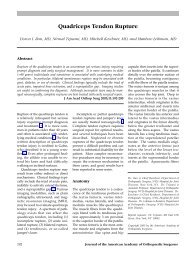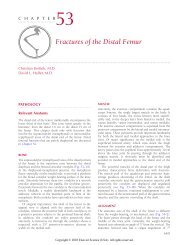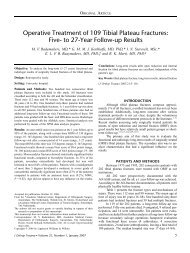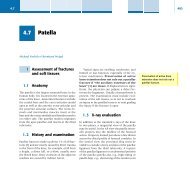Pelvic Disruption: Assessment and Classification
Pelvic Disruption: Assessment and Classification
Pelvic Disruption: Assessment and Classification
You also want an ePaper? Increase the reach of your titles
YUMPU automatically turns print PDFs into web optimized ePapers that Google loves.
16 Pennal, et al.Clinical Orthopaedics<strong>and</strong> Related ResearchAFIG. 6. The posterior lesion may be unstablewhen these ligaments making up the so-called“tension b<strong>and</strong> of the pelvis” are ruptured.FIG. 5. Tomogram showing gross disruptionof the sacrum <strong>and</strong> an avulsion fracture of thetransverse process of L,, an important indicatorof pelvic instability. The patient sustained anL, nerve root avulsion.may be apparent on the initial X-ray as anavulsion of the ischial spine, <strong>and</strong> occasionallylater as calcification in the ligament.While, in the open-book type, the anteriordisruption is almost always a massivediastasis of the symphysis, the posteriorTABLE 1. <strong>Classification</strong> of <strong>Pelvic</strong><strong>Disruption</strong> Based on Directionof ForceAnteroposterior compressionLateral compressionA. Ipsilateral anterior <strong>and</strong> posterior lesionB. Contralateral anterior <strong>and</strong> posterior lesion(bucket-h<strong>and</strong>le)C. Four-rami <strong>and</strong> posterior lesionD. MiscellaneousVertical shearlesion may occasionally consist of a fracturethrough the ilium.Most fractures of the open-book typemaintain the integrity of the posterior aspectof the pelvic ring, that is, the posteriorsacroiliac ligaments. Occasionally, however,the posterior ligaments may rupture<strong>and</strong> render the hemipelvis unstable.Four-rami fracture. Isolated bilateral fracturesof the anterior rami can result fromeither anterior or lateral compressive forces.This so-called straddle fracture is usuallycaused by a lateral compressive force,described below. Rarely, it may be causedby a direct blow on the anterior pubic rami.The displacement of the floating fragmentis usually posterior <strong>and</strong> superior <strong>and</strong> maypersist by the pull of the rectus abdominismuscles. On one occasion, we were attemptingto reduce the pelvic disruptionwith a floating anterior segment, the patientcoughed on intubation. We were watchingthe image intensifier, <strong>and</strong> noted the floatingsegment migrate almost to the level of theumbilicus because of spasm in the rectusabdominis muscle. Rarely, displacement maypersist because of the unopposed pull of thismuscle, if the patient is not managed in


